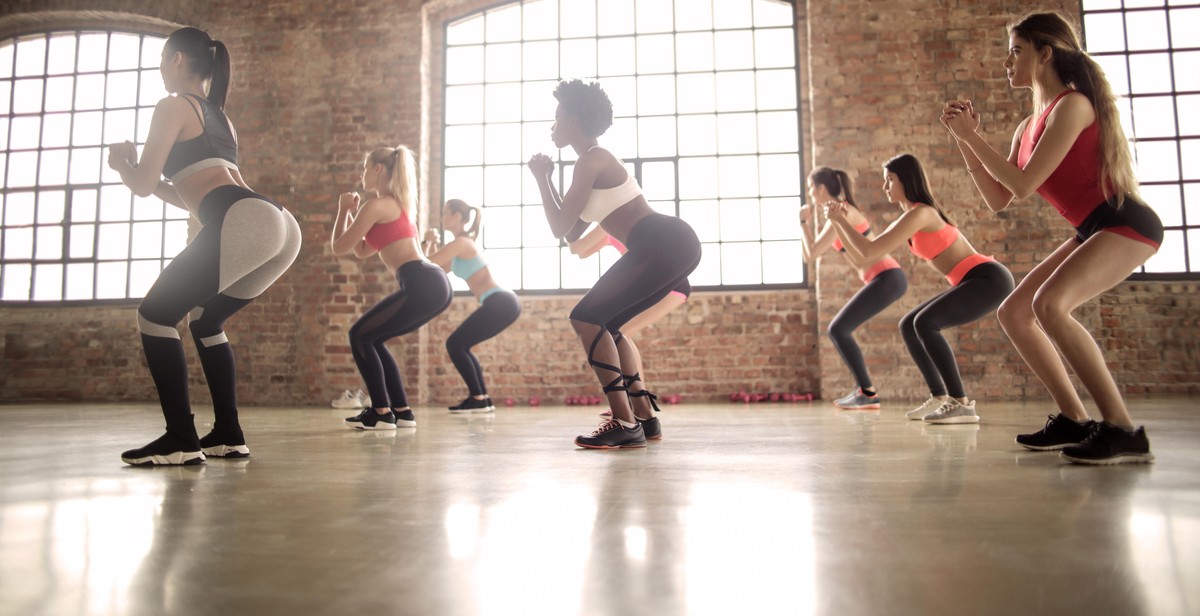Introduction: Proper Squat Technique for Lower Body Strength
Squatting is one of the most fundamental exercises in any strength training program. It is a compound exercise that targets multiple muscle groups, including the quadriceps, hamstrings, glutes, and lower back. Squatting is an excellent exercise for building lower body strength, improving mobility, and increasing overall athletic performance.
What is Squat Technique?
Squat technique refers to the proper form and execution of a squat exercise. Proper squat technique involves a specific set of movements that ensure maximum muscle activation and minimize the risk of injury. The basic squat technique involves standing with your feet shoulder-width apart, keeping your chest up and your core engaged, and lowering your body by bending your knees and pushing your hips back. The goal is to lower your body until your thighs are parallel to the ground, or as low as you can go while maintaining proper form.
However, squatting with proper technique can be challenging for beginners. It requires a good understanding of body mechanics and proper posture. In this article, we will discuss the different types of squats, the benefits of proper squat technique, and provide step-by-step instructions on how to perform a proper squat.

Benefits of Proper Squat Technique
When it comes to lower body strength training, squats are one of the most effective exercises. However, it’s important to perform squats with proper technique to achieve maximum benefits. Here are some of the benefits of proper squat technique:
Increased Lower Body Strength
Proper squat technique engages multiple muscle groups in the lower body, including the glutes, quads, hamstrings, and calves. By performing squats with proper form, you can effectively strengthen these muscles, leading to increased lower body strength. This can improve your performance in other exercises and activities, such as running, jumping, and even everyday tasks like lifting and carrying heavy objects.
Improved Posture
Proper squat technique also involves engaging the core and maintaining a neutral spine. This can help improve your posture by strengthening the muscles that support your spine and pelvis. Good posture not only looks better, but it can also reduce the risk of developing back pain and other musculoskeletal issues.
Reduced Risk of Injury
Performing squats with proper technique can significantly reduce the risk of injury. This is because proper form helps distribute the weight evenly throughout the body, reducing the strain on any one muscle or joint. Additionally, proper technique ensures that the muscles are working together in a balanced way, reducing the risk of muscle imbalances that can lead to injury over time.
| Benefit | Description |
|---|---|
| Increased Lower Body Strength | Engages multiple muscle groups in the lower body, leading to increased strength. |
| Improved Posture | Engages the core and maintains a neutral spine, leading to improved posture. |
| Reduced Risk of Injury | Distributes weight evenly throughout the body and reduces the risk of muscle imbalances. |

Proper Squat Technique
Squats are one of the most effective exercises for building lower body strength. However, performing squats with improper form can lead to injury. Here are the key elements of proper squat technique:
Stance
Start with your feet shoulder-width apart and toes pointing slightly outward. Keeping your feet at this width will allow you to maintain balance and stability throughout the movement.
Foot Position
Ensure that your weight is evenly distributed on your feet. Your heels should remain on the ground, and your toes should not lift. This will help you keep your balance and prevent any unwanted pressure on your knees.
Hip Hinge
As you begin to lower into a squat, initiate the movement by pushing your hips back. This will help you maintain a neutral spine and avoid rounding your lower back, which can lead to injury.
Knee Position
As you lower into the squat, ensure that your knees track in line with your toes. Avoid allowing your knees to cave inwards or push outwards, as this can place undue stress on your knee joints.
Depth
While there is no one-size-fits-all depth for a squat, it is important to ensure that you are not going too deep. A good rule of thumb is to aim for a depth where your thighs are parallel to the ground. Going lower than this can place unnecessary pressure on your knees and lower back.
Breathing
Take a deep breath in before beginning the descent into your squat. As you lower down, exhale and engage your core muscles to maintain stability. Inhale again as you return to the starting position.
By following these key elements of proper squat technique, you can ensure that you are performing squats safely and effectively, and building lower body strength without risking injury.

Common Mistakes in Squat Technique
While squats are a great exercise for building lower body strength, improper technique can lead to injury and hinder progress. Here are some common mistakes to avoid:
Knees Caving Inward
One of the most common mistakes in squat technique is allowing the knees to cave inward. This can put unnecessary stress on the knees and cause injury. To prevent this, focus on pushing your knees outwards as you squat down. Additionally, strengthening the muscles around the hips and glutes can help prevent knee cave.
Leaning Forward Too Much
Another common mistake is leaning too far forward during the squat. This can put undue strain on the lower back and cause pain or injury. To avoid this, keep your chest up and maintain a neutral spine throughout the movement. Engage your core and focus on keeping your weight evenly distributed through your feet.
Not Reaching Proper Depth
Proper squat depth is important for activating all of the muscles in the lower body. However, some people may not be able to reach full depth due to flexibility limitations or other issues. It’s important to work on improving your flexibility and range of motion over time to achieve proper squat depth. In the meantime, focus on maintaining good form and gradually increasing your depth as you are able.
By avoiding these common mistakes and focusing on proper technique, you can get the most out of your squat workouts and build lower body strength safely and effectively.

Exercises to Improve Squat Technique
Performing squats correctly can be challenging, especially if you are new to the exercise. However, incorporating exercises that target the muscles involved in squatting can help you improve your technique and build lower body strength. Here are three exercises to consider:
Goblet Squat
The goblet squat is an excellent exercise for beginners as it helps to teach proper squat form. Here’s how to perform it:
- Stand with your feet shoulder-width apart and hold a dumbbell or kettlebell close to your chest.
- Sit back into a squat, keeping your weight in your heels and your chest up.
- Lower your hips until your thighs are parallel to the ground.
- Push through your heels to stand back up.
Repeat for 3-4 sets of 8-12 reps.
Front Squat
The front squat is a more advanced exercise that targets the quadriceps, glutes, and core muscles. Here’s how to perform it:
- Start with the barbell on the front of your shoulders, with your elbows pointing forward.
- Step back and stand with your feet shoulder-width apart.
- Sit back into a squat, keeping your weight in your heels and your chest up.
- Lower your hips until your thighs are parallel to the ground.
- Push through your heels to stand back up.
Repeat for 3-4 sets of 6-8 reps.
Box Squat
The box squat is a variation of the squat that helps to improve hip mobility and explosiveness. Here’s how to perform it:
- Start by standing in front of a box or bench.
- Step back and stand with your feet shoulder-width apart.
- Sit back into a squat and touch the box or bench with your glutes.
- Pause for a second and then push through your heels to stand back up.
Repeat for 3-4 sets of 8-10 reps.
| Exercise | Targeted Muscles | Repetitions |
|---|---|---|
| Goblet Squat | Quadriceps, glutes, core | 3-4 sets of 8-12 reps |
| Front Squat | Quadriceps, glutes, core | 3-4 sets of 6-8 reps |
| Box Squat | Quadriceps, glutes, hamstrings | 3-4 sets of 8-10 reps |

Conclusion
In conclusion, the squat is a fundamental exercise that can help you build lower body strength and improve your overall fitness. However, performing the squat with proper technique is essential to avoid injury and get the most out of the exercise.
Practice Makes Perfect
Like any exercise, it takes time and practice to master the squat. You may not get it right the first time, but with persistence and patience, you can improve your form and reap the benefits of this powerful exercise.
Key Takeaways
- Keep your feet shoulder-width apart and your toes pointing forward
- Engage your core and maintain a neutral spine throughout the movement
- Lower your body until your thighs are parallel to the ground
- Push through your heels to stand back up
- Gradually increase the weight as your strength improves
Additional Tips
If you’re new to squats, it’s a good idea to work with a trainer or experienced lifter to ensure you’re using proper form. Additionally, incorporating other lower body exercises such as lunges and deadlifts can help you build strength and prevent injury.
| Benefits of Squats | Precautions |
|---|---|
|
|
By following these tips and taking the necessary precautions, you can perform squats safely and effectively to achieve your fitness goals.
